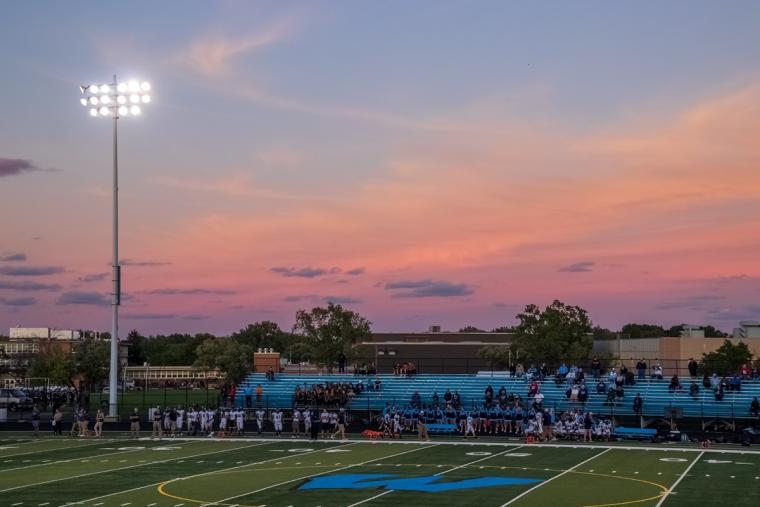
It’s a decades-old conundrum: Lights at outdoor sports facilities in residential areas distract neighbors, who complain about (and sometimes campaign against) construction projects and the light pollution they will create. That grumbling continues, even as lighting manufacturers and suppliers have introduced no-spill options to reduce sky glow and quiet the neighbors.
“With today’s solid state, direct lens lighting technology, spill, glare and glow are significantly less problematic than yesterday’s technology,” one synthetic turf provider recently told SportsFieldManagementOnline.com. “The old days of finding the local football game by following the glow in the sky have been eliminated.”
Still, the future use of football and soccer fields at a park in Charlestown, R.I., is literally up in the air right now because of light pollution concerns.
“The board of directors of the Frosty Drew Observatory & Science Center has said nighttime lighting would be detrimental to stargazing and to the organization’s ability to fulfill its mission to ‘enlighten, discover, inspire — through education and research — knowledge about science, the night sky and the universe,’” according to ecoRI News, a statewide environmental watchdog website.
The site reports that a new master plan for Ninigret Park calls for using “DarkSky-compliant lighting” that would operate on a timer. “We can have lights in the park and co-exist with Frosty Drew,” Town Council President Deb Carney told local media.
Scott MacNeill, director of the observatory and science center, disagrees. “If lights are installed in Ninigret Park, Frosty Drew, Charlestown and the thousands of visitors that come to enjoy the night sky will lose the night,” he told The Providence Journal, adding that low-spill lights would still send light into the sky.
 “I see no reason to light up a field [in Ninigret Park] when you have fields all over town,” added nearby resident Brian Nieves, who photographs the night sky. “Frosty Drew is one of the darkest spots between New York City and Boston.”
“I see no reason to light up a field [in Ninigret Park] when you have fields all over town,” added nearby resident Brian Nieves, who photographs the night sky. “Frosty Drew is one of the darkest spots between New York City and Boston.”
The fields primarily are used by area youth football and soccer teams, and lights would provide more scheduling flexibility for practices and possibly even allow for the playing of night games, according to Dave Prescott, president of the Chariho Youth Soccer Association.
As SportsField Management Online.com notes: There is no doubt that sports lighting has evolved over the years. Incandescent lights were used first on fields and were followed by floodlights. High-intensity discharge (HID), also known as metal halide, came along a few decades later, but it wasn’t until after the millennium that pro sports began using LED.
When field managers consider updates to their overall facility, it is all but expected that they will look at their old HID lights — long the standard in many outdoor installations — with a critical eye and consider replacement with LED systems.
Another advantage of LED is its ability to be remotely controlled; many systems can be used via a mobile app that allows lights to be dimmed or shut off completely at a certain time. It is also far more energy efficient; some vendors tout the annual savings as 75% or more.
Spill from 10 lights illuminating sports fields at Ralph Carter Park in Palm Coast, Fla., has prompted nearby residents to a file code enforcement complaint against the city. One neighbor claims that even with his window blinds closed, the lights still shine into his home’s bedrooms.
“We’ve done some trial-and-error with turning them off at certain times, but unfortunately, it is unsafe for the park to turn them off any earlier than we do,” Palm Coast Communications Director Brittany Kershaw told a local newspaper.
A code enforcement director added that a supervisor would be visiting the neighborhood every night beginning in late November “to investigate the noise and light pollution complaints”; the inspections were expected to last at least a week.
Officials in Crystal Lake, Ill., meanwhile, claim to have found a potential solution to light-pollution concerns sparked by LED lights at soccer fields and a golf driving range in Lippold Park. In September, the Crystal Lake Park District announced plans to purchase 105 Jarvis Lighting shields — intended to “reduce glare, control and direct light, prevent light pollution and protect the fixture from external damage” — from a local light bulb supplier and install them on some of the lights, at a reported cost of more than $17,000, according to the Shaw Local News Network. Plans also called for the lights to be angled to further reduce light pollution.
“This hasn’t fallen on deaf ears,” Crystal Lake Park District Jason Herbster said.

